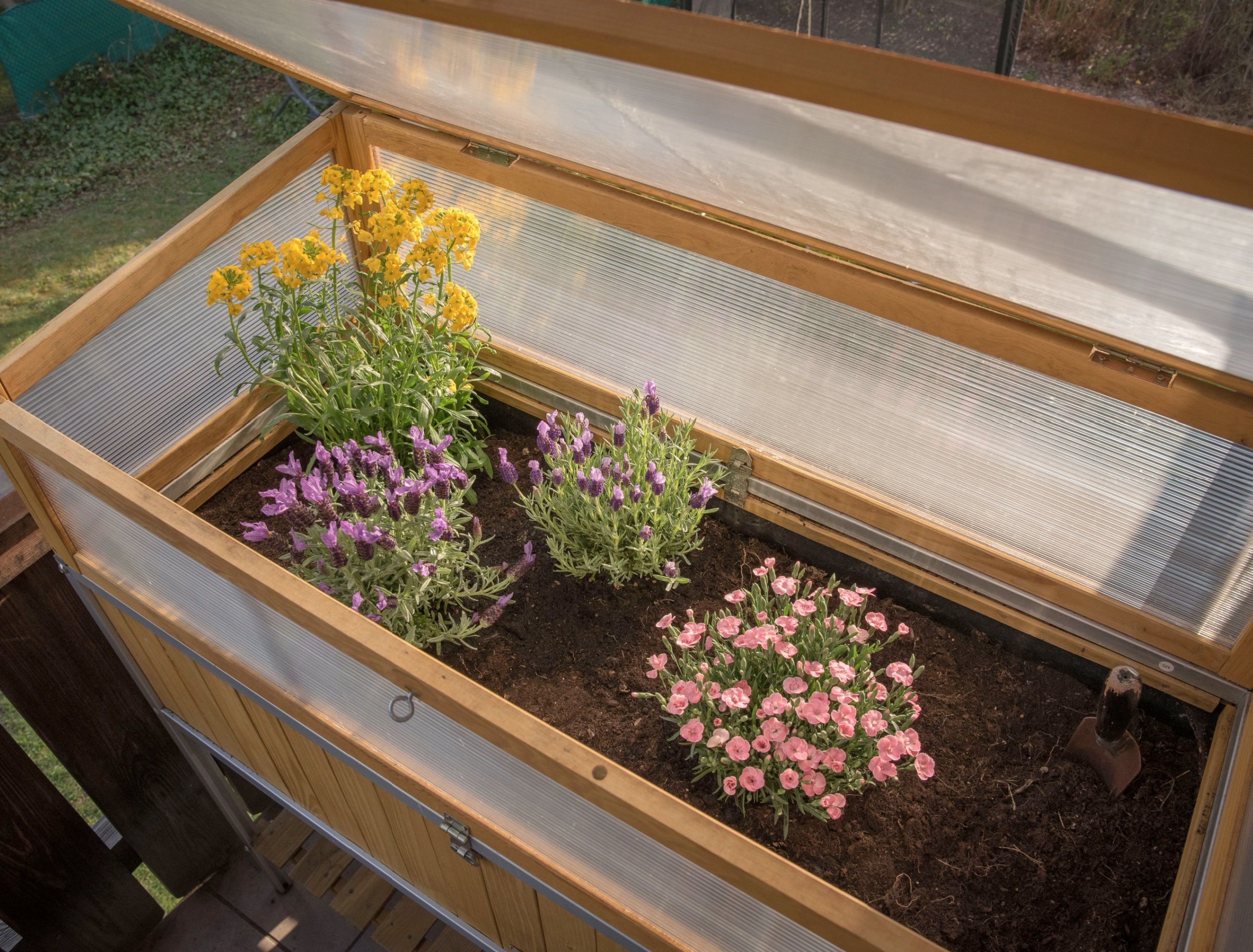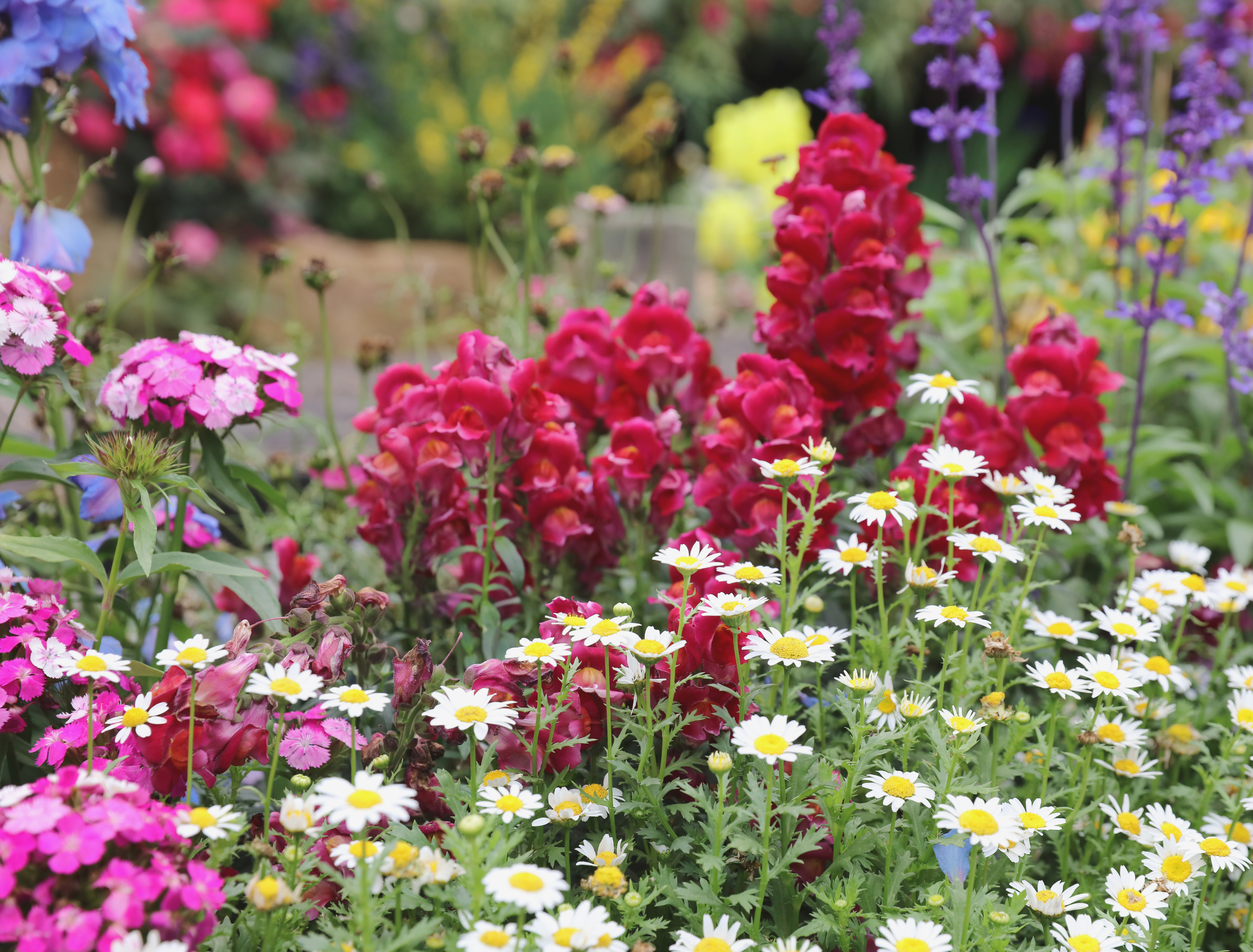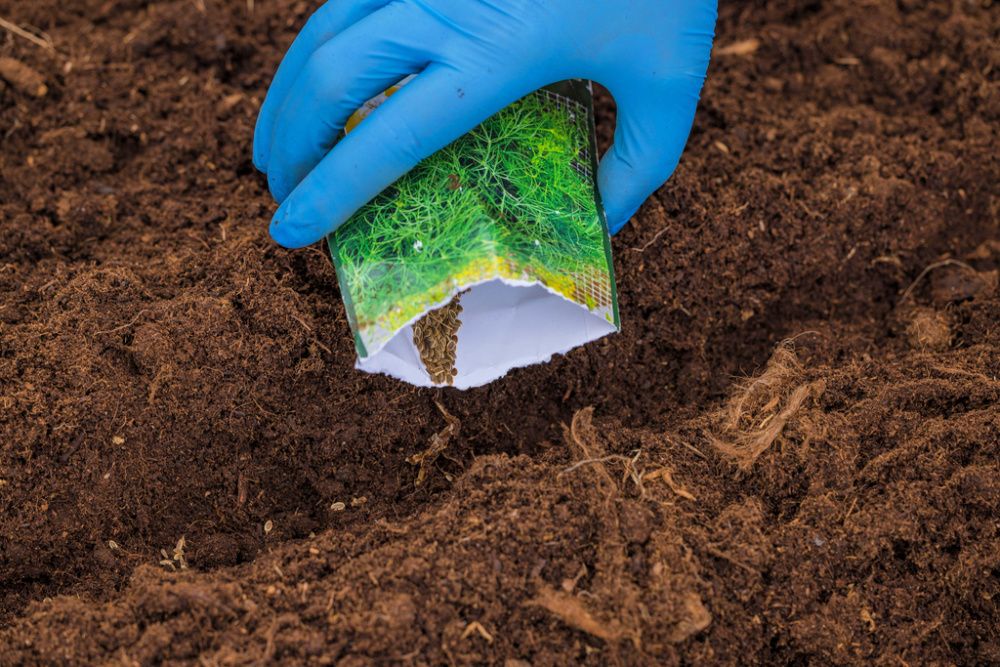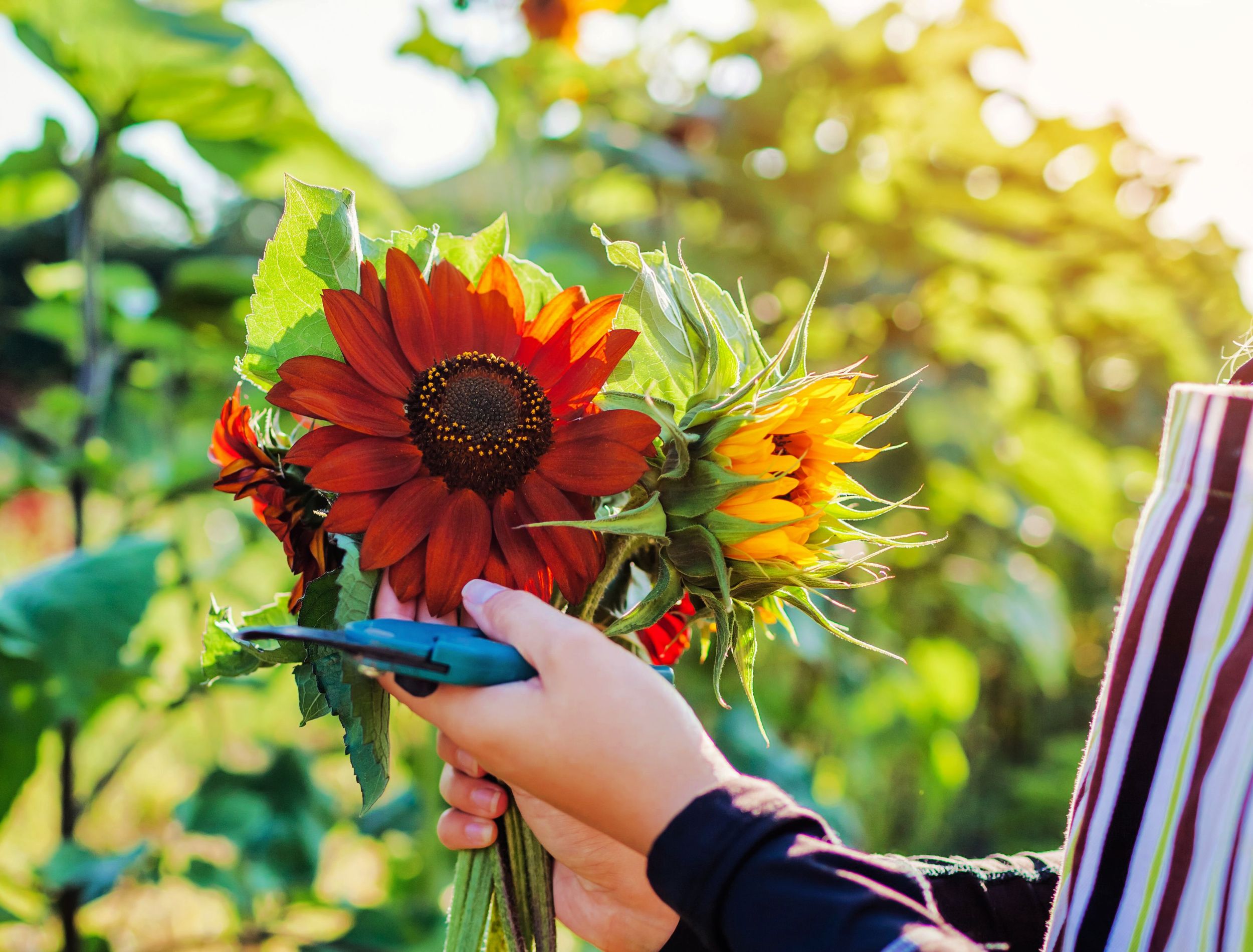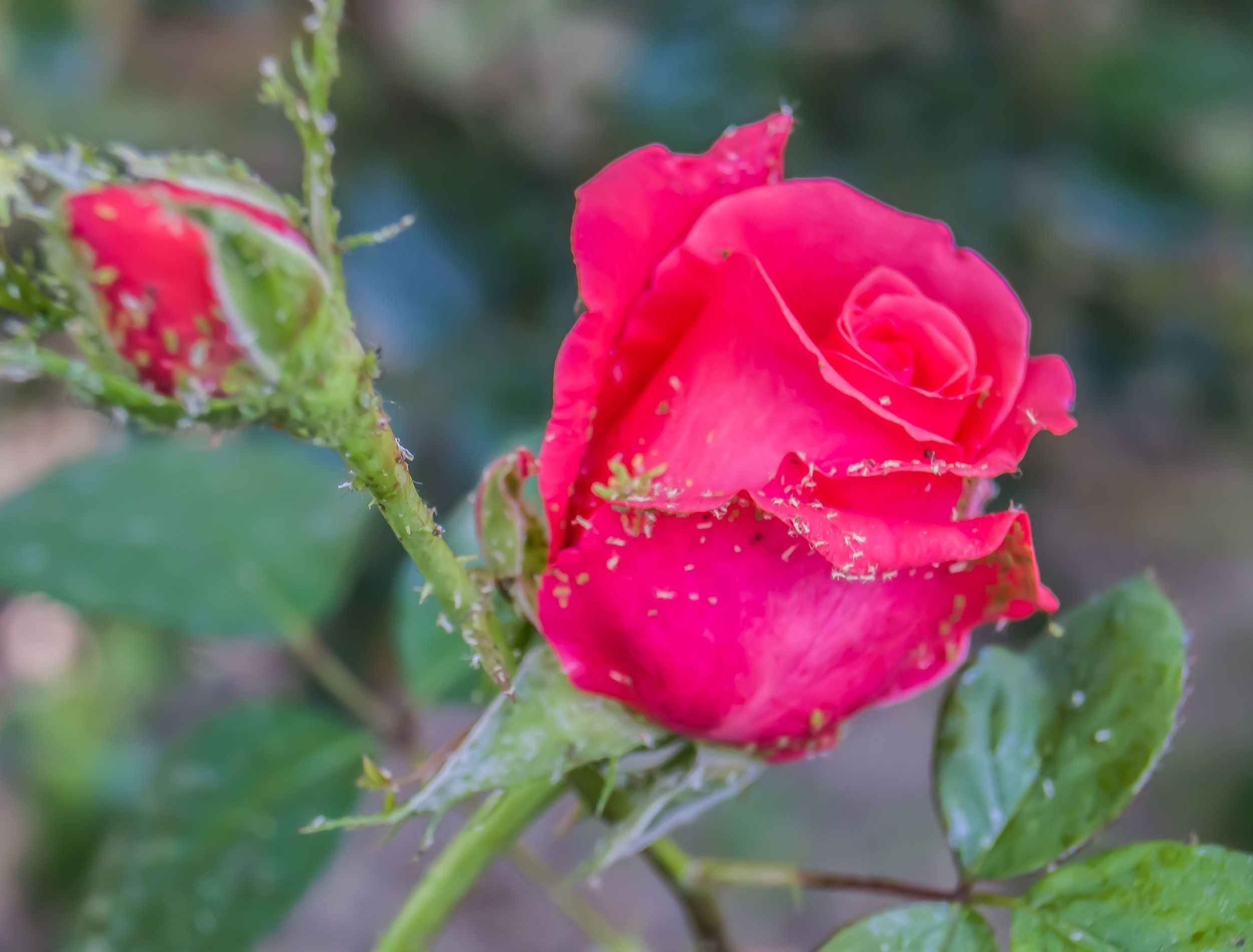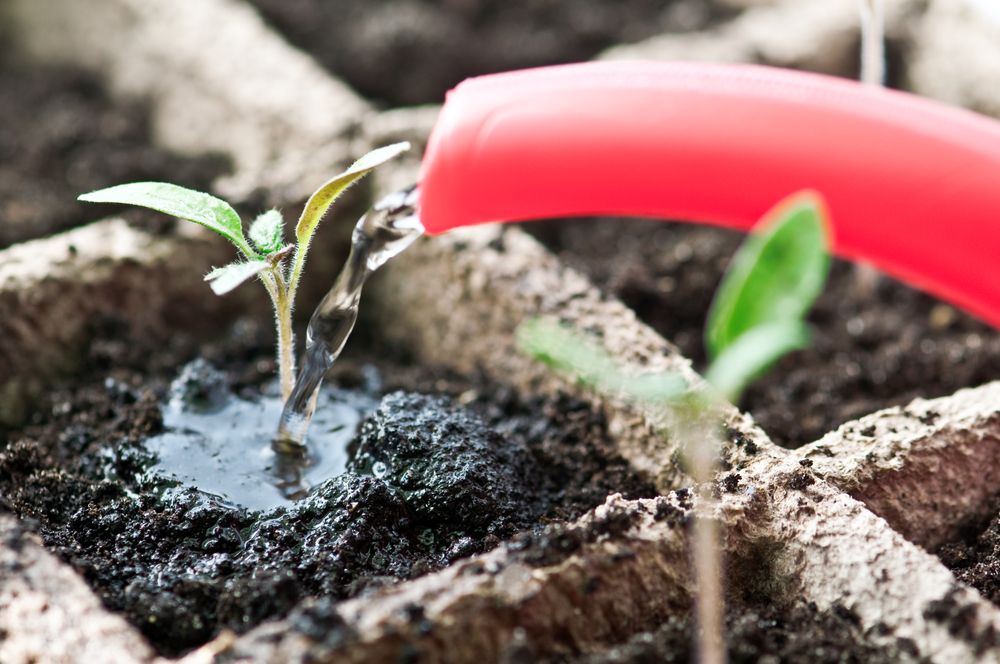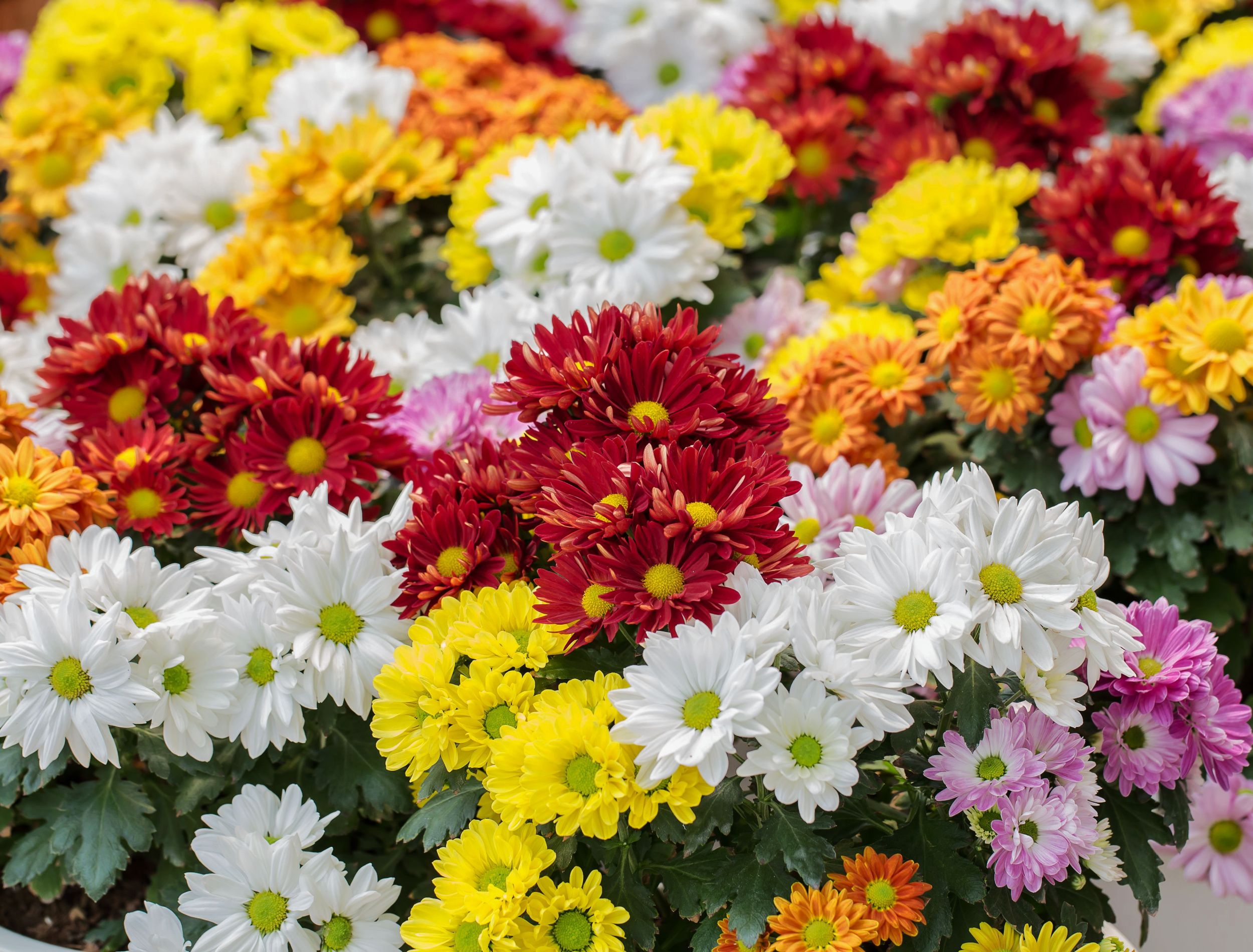When the summer months arrive, everyone wants to be surrounded by the beauty of nature. From gorgeous sunsets to beautiful blossoming flowers. And what could add more life and color to a home than a cutting flower garden?
Growing your cut flowers can provide you with an abundance of vibrant blooms that make perfect additions for bouquets, centerpieces, or just as a special treat for yourself! To get started, here’s what you need to know about creating your cutting flower garden.
What Is a Cutting Flower Garden?
Image credits: Gulliver20 via Shutterstock
A cutting flower garden is a type of garden dedicated to growing plants specifically to harvest flowers. Some focus on pollination, landscape design, or fruits and vegetables while cut flower gardening involves cultivating and nurturing blooms for their beauty, fragrance, and physical composition. Typically thse gardens are for creating bouquets or arrangements.
What You’ll Need
Image credits: Towfiqu barbhuiya via Pexels
Here’s a list of some supplies you’ll need for growing your own cutting garden.
- Seeds
- Clean shears
- Soil
- Compost
Step-by-Step Guide for Creating Your Own Cutting Garden
Step One- Visualize Your Garden
Image credits: Ground Picture via Shutterstock
Visualize your cut garden as you plan it, and choose flowers with complimentary colors, scents, and textures. Try to imagine how each flower would look in an arrangement or bouquet before planting a large number of them.
To get ideas for the perfect mix of blooms for your garden, explore the local nurseries. It’s easy to get inspired by all the beautiful flowers on display! Additionally, browsing through seed catalogs can provide great inspiration for unique blends of blooms that may not otherwise be available locally.
Step Two - Choose Your Growing Site
Image credits: seaonweb via Canva
Choosing the right spot for your cut garden is one of the most important steps in creating a beautiful, vibrant display of flowers. The ideal location should have plenty of direct sunlight and proper drainage.
Plus, choose a site with well-amended soil that can provide plants with a healthy environment for growth. It's a good idea to test the soil at your site before you begin planting. This way you can ensure you plants have everything they need to thrive.
Step Three - Prep the Site
Image credits: Gajus via Shutterstock
Before you plant your cut flower garden, ensure the soil is ready. Adding organic matter like leaf litter, compost, and composted manure will give your flowers the best chance of thriving. Not only does this add nutrients to the soil, but it also improves aeration and water-holding capacity.
For an extra boost, purchase potting soil or soil amendments to mix in with your garden soil. It will give you a good starting point for growing beautiful blooms!
Step Four - Selecting the Right Flower Seeds
Image credits: Mulevich via Shutterstock
Once you’ve chosen your site, it’s time to determine which types of flowering plants to include in your cut garden. Start by selecting varieties suited to your local climate and soil type, then add different colors and sizes to create a beautiful display. You should also check what flowers do best in your zone.
Include both perennials and annuals so that your garden will remain vibrant year-round. Don’t forget to consider drought-tolerant varieties if you live in an area with limited water resources!
Step Five - Harvest Your Cuttings Often
Image credits: Mariia Boiko via Shutterstock
When creating a beautiful cut garden, frequent harvest is key. Not only does this ensure that you get the most out of your plants, but for many varieties, like annuals, harvesting often encourages more blooms! So, don’t be afraid to reach for the scissors when those blooms burst forth.
Pro Tip: Clean your gardening tools between each flower harvest to avoid spreading diseases among your plants.
Step Six - Protect Your Flowers
Image credits: Vladimir Konstantinov via Shutterstock
If you want to protect your cut flower garden from pests, prevention is the best method. Start by doing a thorough inspection of your plants regularly. Look for signs of pests like aphids and their sticky residue or wilting leaves.
If you spot any early signs of infestation, act right away. It could mean using homemade insecticidal soap sprays or handpicking the bugs off your plants. You can also use natural deterrents such as neem oil, garlic spray, or diatomaceous earth to deter pests from destroying your garden.
Start Your Garden Indoors in Winter
Image credits: Smit via Shutterstock
With the chilly winter months here, now is a great time to start your new cutting flower garden! Starting seeds indoors will help you extend the growing season and add a bit of floral diversity to your outdoor space. With some seed trays, seed starting soil, and a bright, sunny windowsill, starting flowers indoors couldn’t be easier.
For those living in regions that experience cold winters, starting seeds indoors is a great way to get the most out of your cut flower garden. When the weather warms up, you can transplant your seedlings outdoors.
Best Flowers for a Cutting Garden
Image credits: chatchawin jampapha via Shutterstock
If you’re looking for the best flowers to grow in your cutting garden, look no further! Here’s a list of some fan-favorite flowers perfect for creating beautiful bouquets.
Rose
Roses have been beloved by flower lovers everywhere for centuries because of their beauty, fragrance, and elegance. They come in many varieties, so you can find one that fits your particular climate.
Sunflowers
Who doesn’t love a sunflower? The bright, cheerful blooms will bring life to your cutting garden while providing plenty of birdseed when they mature. They look great in bouquets all by themselves.
Cerinthe
This versatile flower has an abundance of small blue/purple flowers that add texture and beauty to any arrangement.
Zinnias
Zinnias are beautiful, hardy flowers that come in a variety of colors and sizes. They’re perfect for adding color and interest to any outdoor space, and their seeds germinate quickly!
Bachelor’s Buttons
These vibrant, daisy-like flowers come in many colors and add a beautiful pop of color to any outdoor space.
Cosmos
These cheerful wildflowers have been a favorite of many gardeners for generations. They add an airy, natural feel to any garden.
Chrysanthemums
Chrysanthemums are another choice for adding color and beauty to any outdoor space. The blooms come in many shades, making it easy to create stunning arrangements.
Snip, Snip!
Now that you have all the information you need to get started, there’s no excuse not to give it a try! It might surprise you how much you enjoy working in your cutting flower garden and how gratifying it is to see your hard work pay off. With proper care and maintenance, you can enjoy an array of gorgeous blooms for many occasions.
Leave a comment below about what varieties of plants you chose for your cutting garden!


